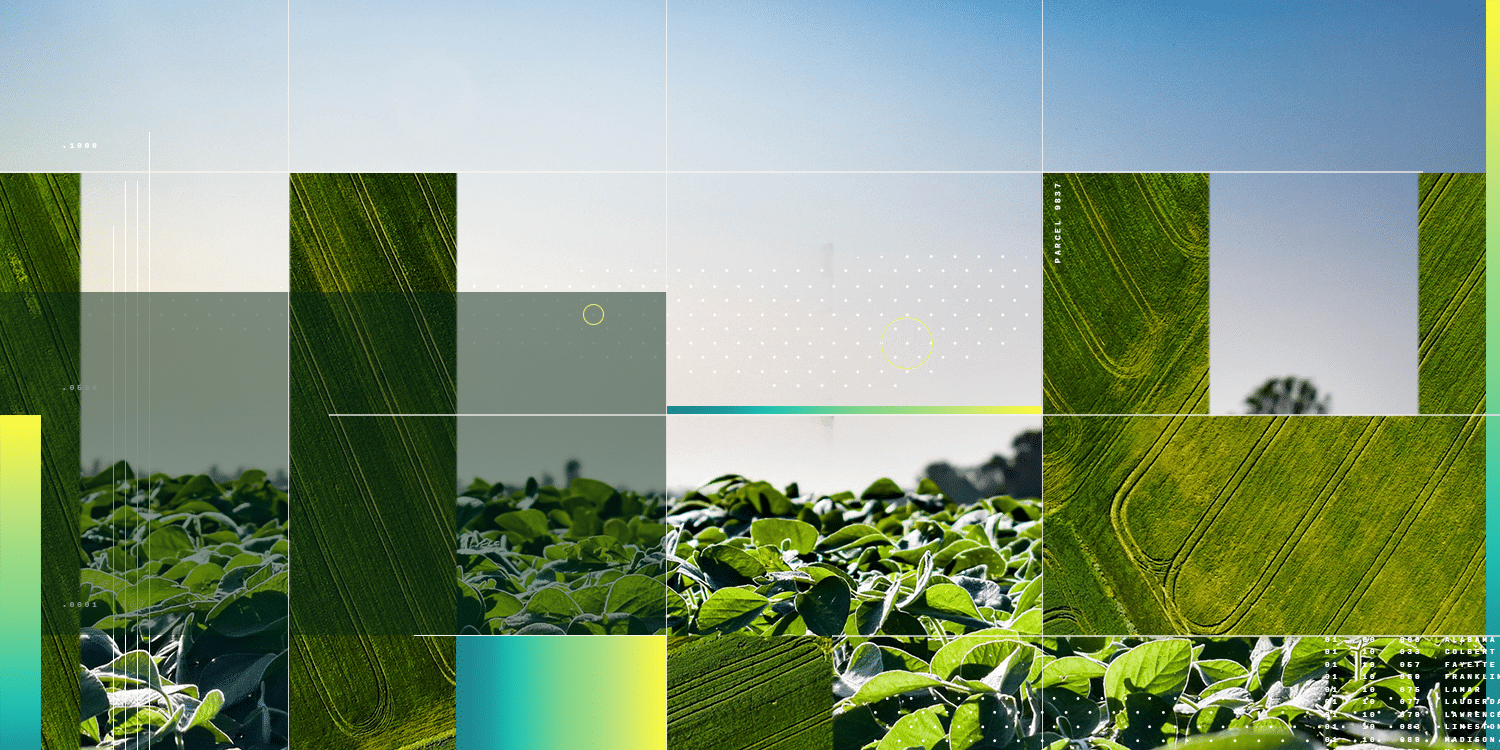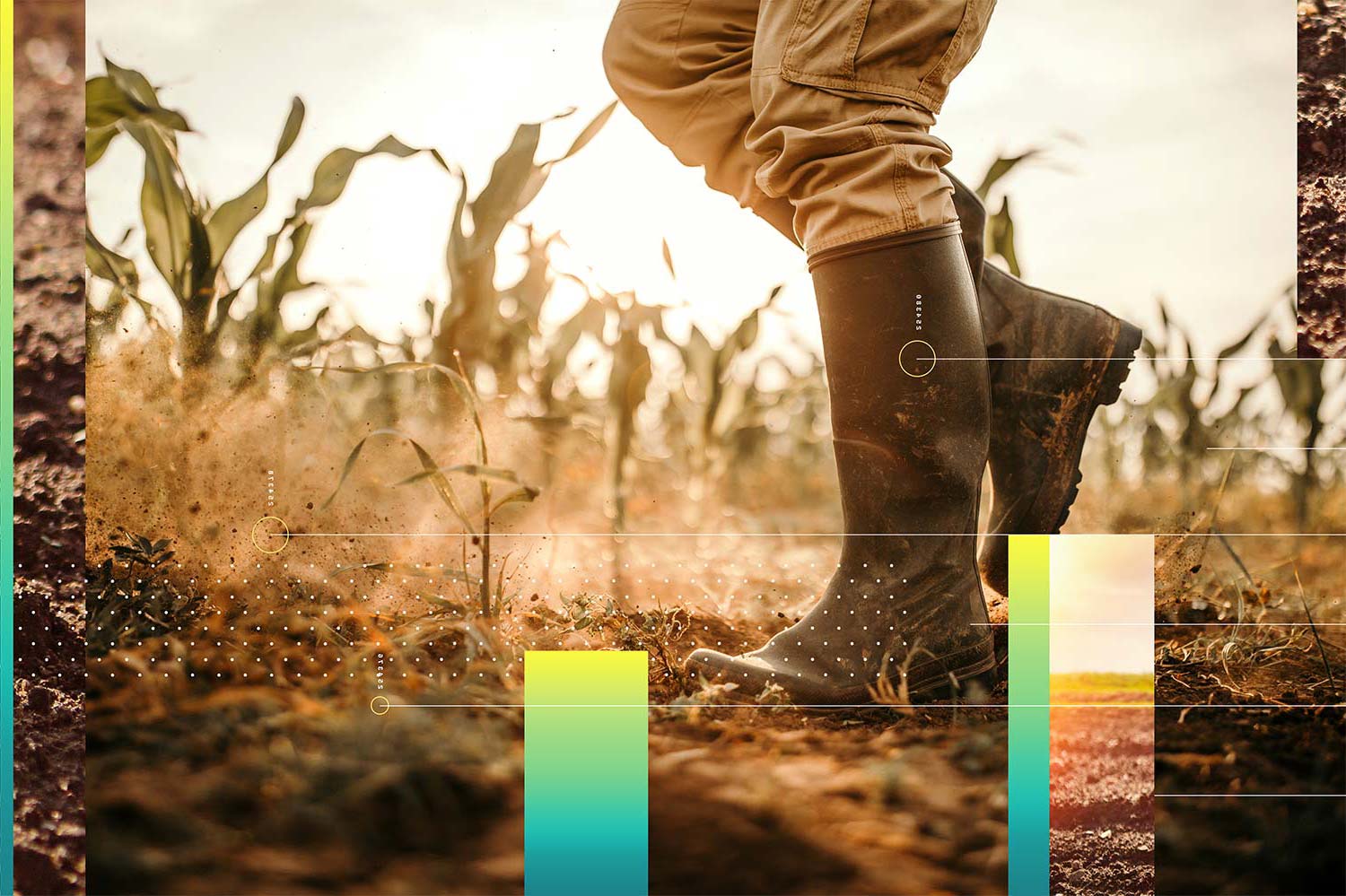The Guide To Regenerative Agriculture
Building a Sustainable World From the Ground Up
The world population is expected to reach 9.9 billion by 2050, according to the United Nations1. The large population increase means that there will be major changes in meeting the demand for agricultural production while mitigating and adapting to climate change. Agriculture’s role in contributing to greenhouse gas emissions (GHG) is widely known but poorly understood. Since 1900, global carbon emissions have steadily increased, with agriculture, deforestation, and other land-use changes being the second-largest contributors2. Unless the industry’s impact on climate change is addressed, the impact of carbon emissions will continue to increase.
Agriculture is one of the most chemical- and resource-intensive industries globally, which has direct and indirect effects on the environment. The unconsolidated nature of agriculture and the fact that it employs roughly 1 billion people3 means that a mass consensus for change must be achieved. Responsible management of land and resources is imperative for growing operations of every size and scale in order to minimize the impact to natural environments. The industry also faces the need to balance adjustments to prevent climate change and address biodiversity, food security, and the livelihood of farmers and farming communities.
Farmers represent the future of sustainable agriculture in the US. A growing number of food producers, companies, scientists, academics, conservation organizations and government bodies are promoting, incentivizing and trying new, sustainable farming practices. As a result, there is growing support for a shift to farming practices that make regenerative agriculture more productive and resilient while also helping to mitigate – possibly even reverse – climate change by drawing down CO2 from the atmosphere and reducing GHG emissions from farming practices.
That is where regenerative farming comes in. Farming is a complex operation, often requiring years and significant investments to realize the benefits of regenerative agriculture practice changes fully. Investments include the time to learn and incorporate new practices, money to fund new equipment, fuel, and seeds, and tribal knowledge handed down from prior generations of growers.
That’s why businesses and their growers need to identify and access appropriate resources to help further their sustainability journeys.

Learn more on our Regenerative Agriculture Guided Learning Pathway
Regenerative agriculture is not a prescribed set of farming practices. Rather, it is an approach to farming incorporating regionally and crop-sensitive practices that focus on rebuilding and restoring the soil through:
Regenerative agriculture is not just the latest name or label for sustainable farming.
Agricultural sustainability traditions vary. At their core, they rest on the principle that we must meet the needs of the present without compromising the ability of future generations to meet their own needs. Under a sustainable mindset, long-term stewardship of natural and human resources is equally important to short-term economic gain. Stewardship of human resources includes consideration of social responsibilities such as working and living conditions of laborers, the needs of rural and traditionally disadvantaged communities, and consumer health and safety both in the present and the future. Stewardship of land and natural resources involves maintaining or enhancing the quality of these resources and using them in ways that will not prevent them from being used for the future, but not necessarily focusing on improving them now or later4.
Sustainable agriculture practices are primarily focused on efficiency without damage. Sustainability seeks to do less harm to the environment while still meeting society’s food and farming needs. Sustainable agriculture reduces and sometimes even avoids hazardous pesticides and fertilizers. These practices result in farmers producing safer crops for consumers, while decreasing the energy required to produce the necessary yields.
However, sustainable agriculture is fundamentally a fractured rather than a holistic approach. At its core, sustainability seeks affordable continuation rather than restoration. To be clear, it is a good approach5, but an incomplete one. Cheap continuation can pull in some practices that are intrinsically good for the soil. But its objective is not the recovery and restoration of the soil.

The Conventional – Sustainable – Regenerative Quadrant. Bill Reed (2007)
Conversely, regenerative agriculture is an approach to farming that focuses on sustaining soils and the environment, and improving and restoring them. By implementing practices that help restore and revitalize soils, healthier, climate-resilient yields are produced, healthy soils and biodiversity are recovered, and ecosystems— including humans— are made healthier. The regenerative approach to farming works with natural systems to repair the landscape, soil structure, ecosystem biodiversity and climate for the sake of long-term productivity and sustainability. Regenerative agriculture brings together multiple climate-resilient and sustainable agriculture methods to achieve the goal of restoring land health.

At the intersection of sustainability, conservationism and climate action, regenerative agriculture presents a solution that elevates and advances the goals of each of these agricultural paradigms. Regenerative agriculture mitigates climate change, creates more productive soil and supports the next generation of farmers. Regenerative agriculture presents new and more profitable opportunities for farmers to work with nature to support the health and productivity of their farm.
Regenerative agriculture encourages farmers to invest resources into restoring their most valuable asset, their land. While transitioning a farm to regenerative practices takes considerable planning and time, it provides farmers with the tools to plan for long-term success and mitigate future threats to their livelihoods.
Support for regenerative agriculture is echoing throughout the global agriculture industry. Food companies like General Mills12, Nestle13, and Pepsi14 are pledging and committing resources to make their supply chains more sustainable. The attention from household names is pushing suppliers to adopt more regenerative practices.
Consumers, too, are paying attention to the supply chains behind their goods and services. Two in three consumers in the United States, U.K. and China said that companies should invest in sustainability15.
Making purchases that support regenerative practices offers consumers a new opportunity to play an active role in tackling climate change. As individuals’ concerns about climate change deepen, regenerative products are well poised to become the next big thing to take over grocery store shelves.
For brands, regenerative sourcing presents an opportunity to define themselves as leaders in the space and to address the ever-increasing consumer demand for sustainable products. The companies that commit to regenerative early on will undoubtedly find success in their business as demand continues to grow.
In recent times, interest in and awareness of regenerative agriculture has exploded. As evidenced in web search term popularity, the concept of regenerative agriculture has far outpaced “conventional agriculture.”

GoogleTrends – trends.google.com search term comparison 2004-2022, accessed April 2022.
Regenerative agriculture is even now poised to overtake other, much more established concepts like sustainable and organic agriculture.

GoogleTrends – trends.google.com search term comparison 2004-2022, accessed April 2022.
“Regenerative agriculture” first overtook “sustainable agriculture” as a search term in June 2021, and now tracks closely while rising. Concurrently, sustainable agriculture, as a search term, is trending down since 2004.

GoogleTrends – trends.google.com search term comparison 2004-2022, accessed April 2022. Regeneration surpasses organic in June 2019.
Taking search term prevalence as a proxy for general awareness of and interest in these concepts, it is clear that regenerative agriculture is an important and growing concept, especially in relation to addressing global climate change.

Regenerative agriculture goes beyond yields and profitability. While these are arguably the most immediate measures for farmers year to year, new sources of value, revenue and accounting are emerging. Of course, we mean carbon credits, insets and offsets.
When it comes to reducing carbon emissions, organizations can go about it in two ways – carbon offsets or carbon insets. Carbon offsets are the purchase of carbon credits to offset the production of a good while carbon insetting helps enterprises build sustainable activities directly into their supply chain.
Sustainability has been spreading to supply chain management. Enterprises are prioritizing how to create products that not only sell well but also have a lower impact on the environment. To help change how products are manufactured from the bottom up, organizations are looking for new ways to build carbon insetting into their supply chains.
Carbon offsets enable organizations and individuals to reduce their carbon footprint. When purchasing carbon offsets, it’s important to ensure the offsets have environmental integrity. There are five criteria for carbon offsets that are recognized by all climate bodies and are outlined by the World Resources Institute (WRI)28.
CIBO helps companies follow through on their carbon commitments by creating a first-of-its-kind, voluntary carbon marketplace for direct access to insetting and offsetting carbon credits generated by farmers.
CIBO connects stakeholders with the regenerative potential of land in their supply chains. The platform makes it easy to see how sustainable farming practices impact the environment and helps companies incentivize growers through generation of carbon credits and other means. By building sustainable practices into a supply chain, organizations are able to economically and environmentally align for a positive environmental impact.
Each company is different and has different needs. That’s why CIBO works with organizations to customize their program to meet individual customer sustainability goals. The flexibility of the technology allows customization for portfolios, growers, and the ability to scale.
Supply chain transparency is a daunting task, complicated by a vast number of suppliers, plants, distributors, and products. Gaining the ability to track each seed from the ground to the grocery store opens up doors to new opportunities for sustainable promotion. More transparency into the practices of growers helps transparency-conscious food companies more easily provide information about their grower network. The new layer of transparency delivers confidence to consumers and real impact around climate change in regenerative agriculture and in the food industry.

The CIBO Program Engine is integrated directly into CIBO Enterprise. This enables businesses to create and manage their grower incentive programs for carbon credit generation, Scope 3 emissions reduction, and corporate sustainability.
CIBO Enterprise with the CIBO Programs Engine streamlines the recruitment and enrollment process for private and sponsored grower incentive programs.
CIBO Enterprise with the all-new CIBO Programs Engine now combines grower enrollment and program management with award-winning, scaled MVR capabilities. Now any business can engage, monitor, verify, and report on program outcomes.
Benefits:
CIBO Grower helps land owners and operators discover, enroll in, and stack incentive programs for sustainable and regenerative farming practices.
To land owners asking, “how do i get paid for regenerative farming?” the process is simple. Through a fast and easy online process, growers are automatically matched with incentives and programs for which they may qualify. CIBO Grower then streamlines and accelerates enrollment.
Incentives include pay-for-practice programs, carbon insetting programs, carbon offset and carbon credit programs, as well as private recruitment, incentive and government programs.
Benefits:
At CIBO, we believe everyone can help create a climate-resilient future. Regenerative agriculture is a key part of the solution to adopting sustainable farm management that also provides long-term productivity and profitability. The growing shift in farming practices is helping to make agriculture more productive and resilient while also helping to mitigate – possibly even reverse – climate change by drawing down CO2 from the atmosphere and reducing GHG emissions from farming practices.
CIBO helps both organizations and farmers to environmentally and economically align their choices in agriculture production. By incentivizing farmers to implement more sustainable practices, organizations can also benefit by offsetting their overall carbon footprint. Landowners and operators are now able to easily navigate discovering, enrolling in, and stacking incentive programs for sustainable and regenerative farming practices. At CIBO, we believe in helping every business and grower connect with the land in a new way. That’s why we’ve developed technologies that help farmers reap the benefits of improving the environment for all of us. Regenerative agriculture is here to help protect and improve the earth for future generations.
